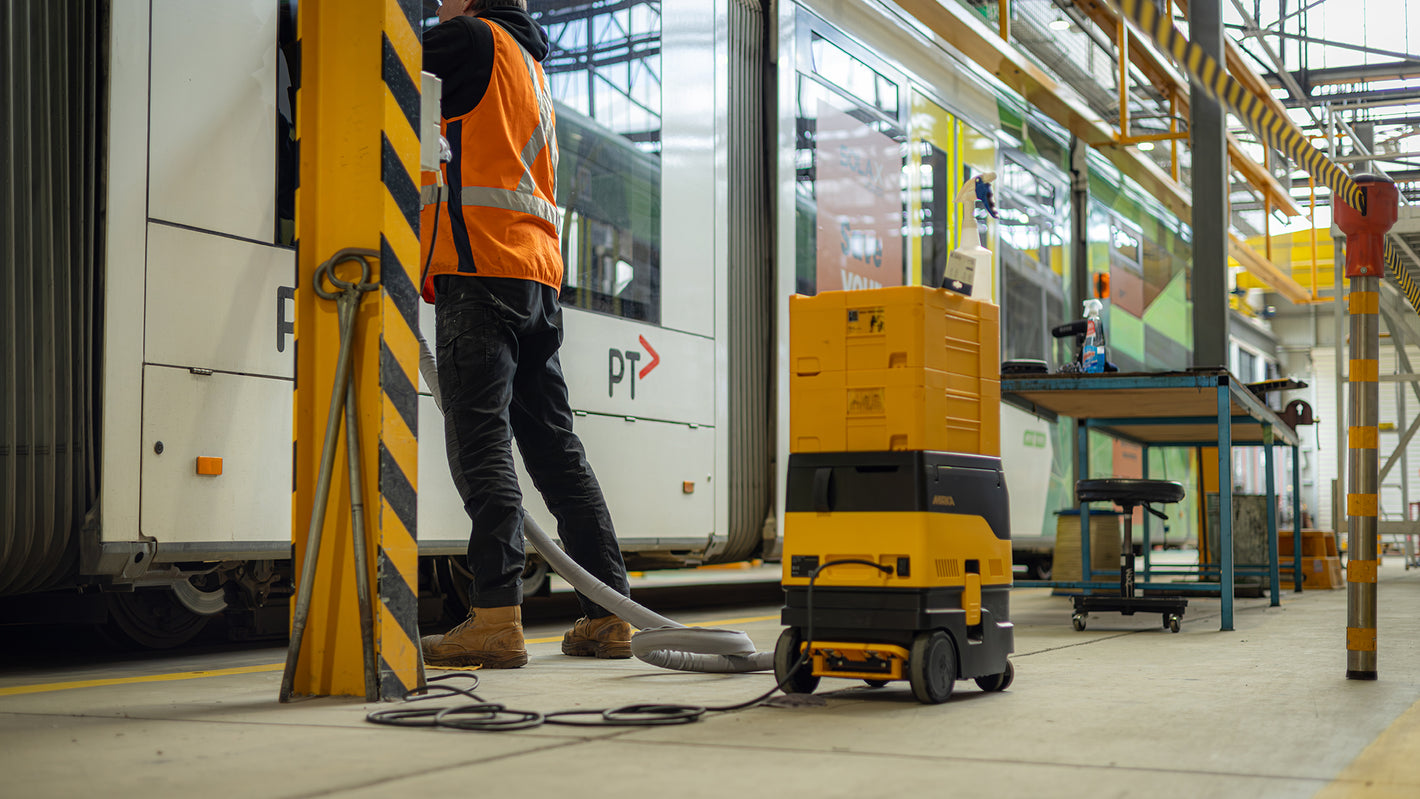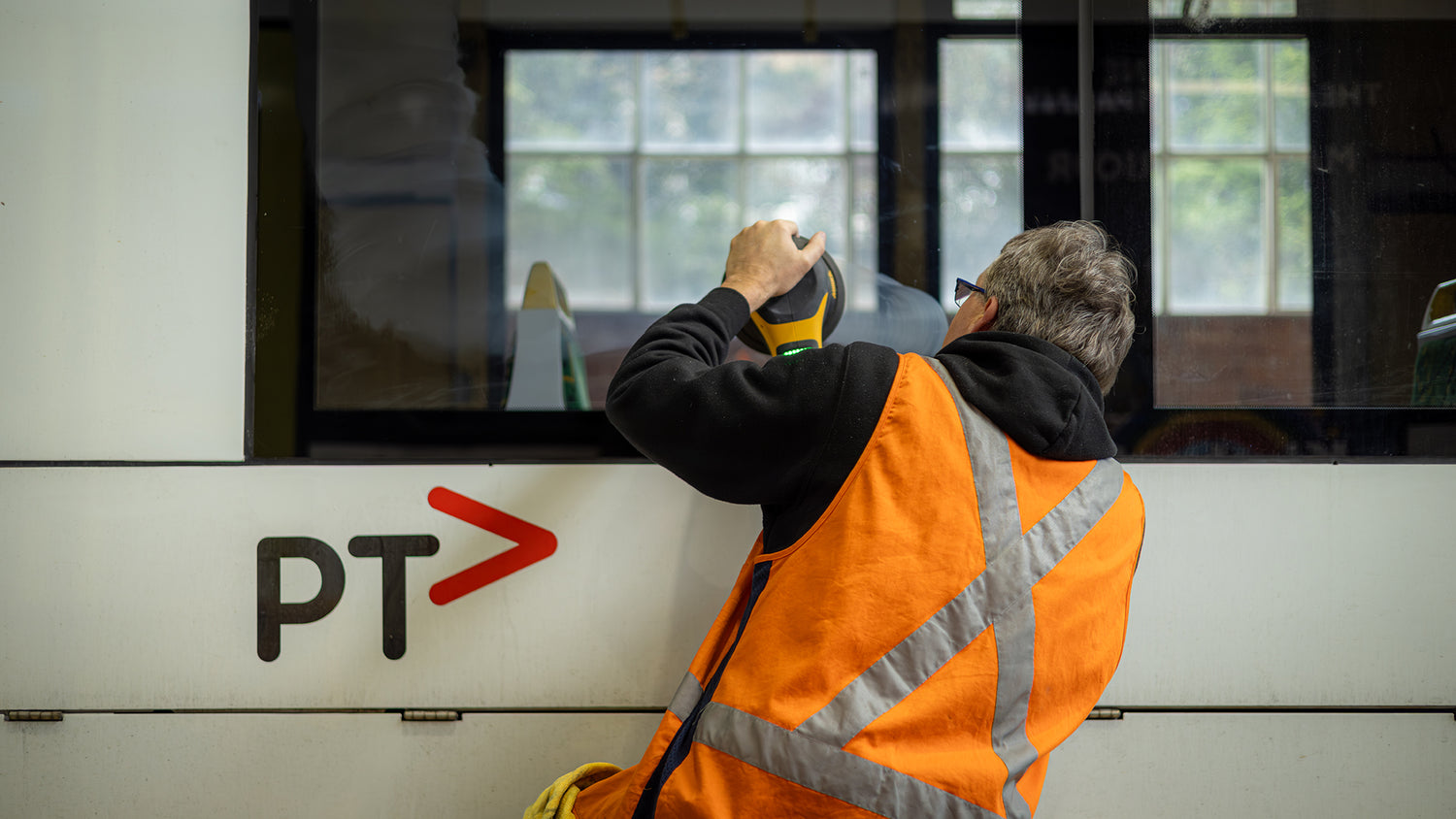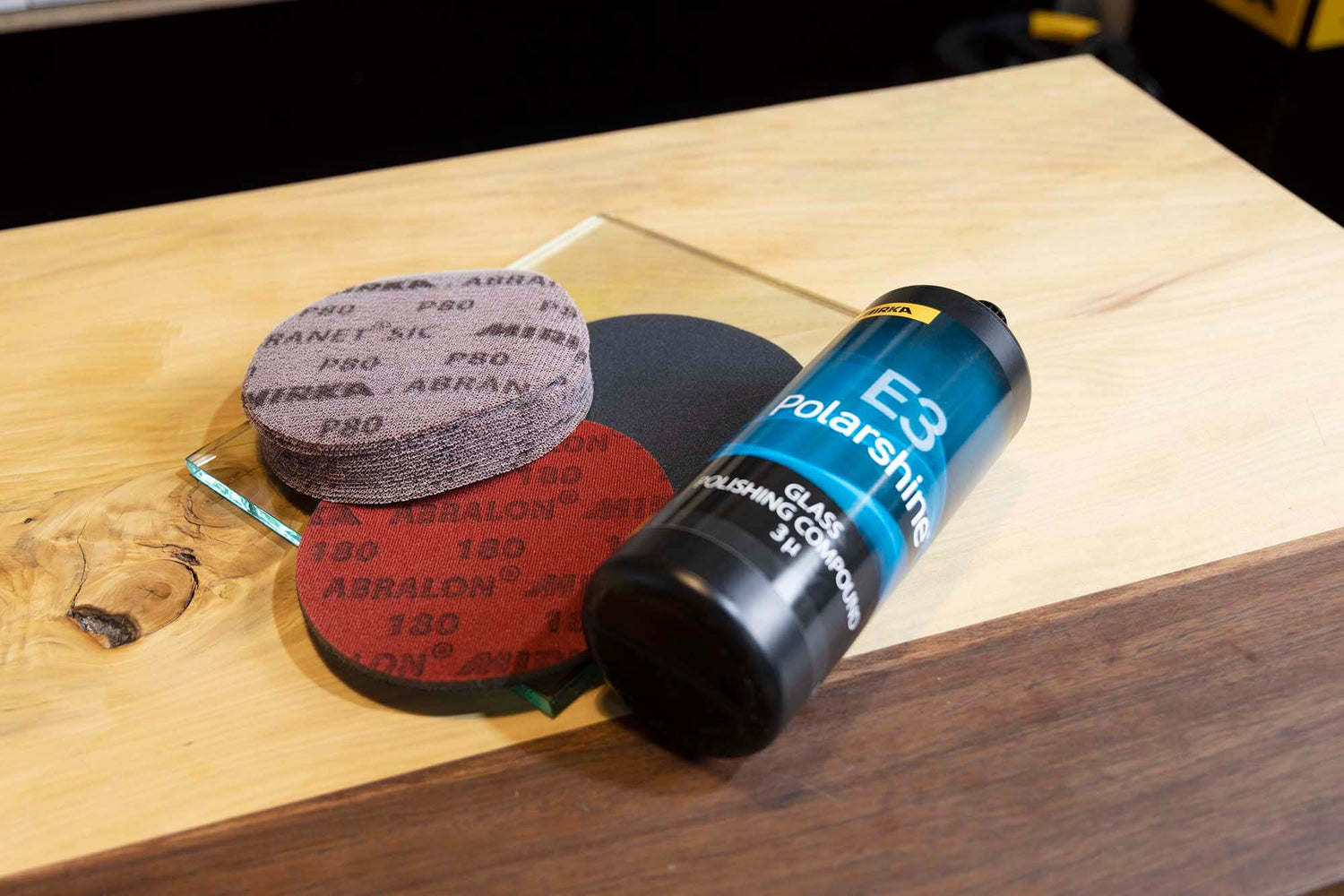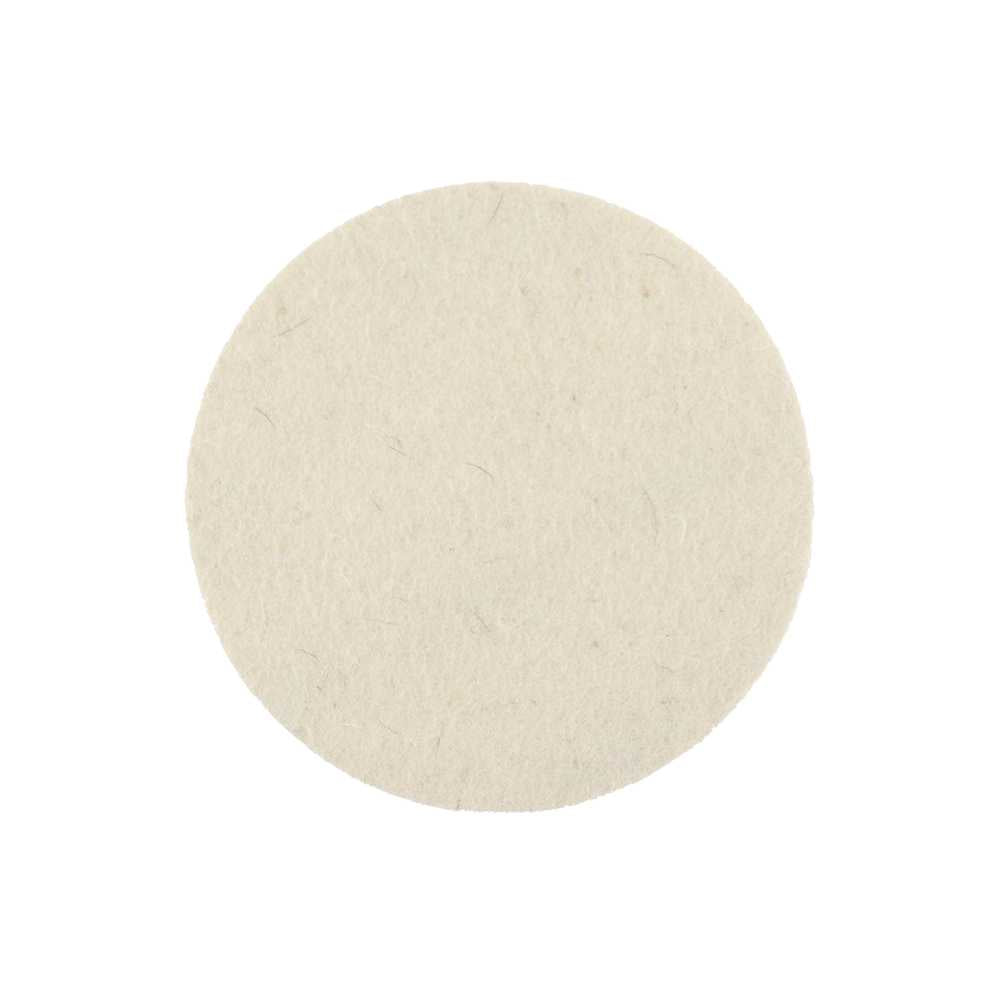
Why Use Oiling Pads — Not Brushes or Rags
When it comes to finishing wood, the old-school methods like brushes or rags often leave you with uneven coverage and waste of oil. The specially designed Mirka oiling pads offer...
Did you know damaged glass doesn’t always need replacing? With Mirka’s unique glass sanding and polishing solution, you can restore and recondition surfaces instead of paying for costly replacements — saving both time and money.
This step-by-step system takes you from cleaning, to sanding, to polishing, delivering clear, professional results across a wide range of applications. From architectural facades and interior glass, to marine, rail, and automotive surfaces, Mirka’s solution works across industries.
However, glass sanding and polishing must be carried out correctly. Using the right tools, abrasives, and techniques is essential to avoid damage, and it’s important to know when this process is not recommended — such as on car windscreens, where safety and optical clarity could be compromised.
Recommended Applications:
Automotive side and rear windows
Architectural glass (facades, interior glass panels)
Boats, trains, yachts, decorative glass
Tempered and non-tempered surfaces in many contexts
Not recommended for:
Vehicle front windshields: There is a risk of optical refraction.
The smart solution
Mirka’s glass reconditioning system is designed for precision sanding and polishing. The goal is to remove scratches without compromising optical clarity. The process works in stages, with abrasives tailored for defect removal and polishing compounds for a flawless finish.

1. Sanding / Defect Removal
Remove scratches & surface damage using Abranet SIC NS and Abralon for deep scratches and begin with Abralon for minor scratches.

2. Refinement
Reduce scratch patterns and prep for polishing by wet sanding using the finer Abralon grits.

3. Polishing & Finish
Restore clarity, shine & optical quality with Polarshine E3 and Felt Polishing Pads.
Best practices
Before starting any glass sanding or polishing project, it’s important to carefully read the information below. This guide contains vital best-practice tips,
designed to ensure the best possible outcome.
Taking the time to understand the process before beginning will save both time and frustration in the long run.

start the process by cleaning the surface
Always start the process by using window cleaning liquid. You can use both IPA (Isopropanol) and glass cleaner, as they remove different types of dirt and grease.

do not touch the glass with bare fingers
Throughout the entire process, do not touch the glass with bare fingers — transferred grease can affect results and leave visible fingerprints. Avoid touching or wear gloves.

Assess & determine the correct starting grit
Choosing the correct grit depends on scratch depth. Start with a fine grit or try polishing the scratch out first. If it’s not enough, move to the next coarser grit — fewer steps mean less work and lower risk of optical refraction.

Test on a small area first
Try the process on a discreet section to confirm grit choice, technique, and finish before working on the whole surface. This helps avoid mistakes and ensures the best results.

Set the machine to low speed
Set the RS 600 Sander to a low speed (around 1100 rpm) to control surface temperature and avoid damage.

Keep machine flat
When sanding and polishing, keep the machine flat to surface, this will give a better and smoother finish.

Take your time at each sanding step
Take sufficient time over each sanding step, it is all about giving each step the time it needs.

Clean in between steps
Clean in between the steps to avoid dust from previous steps causing additional scratches.

Protect yourself
Always use a dust protection mask. Please check local legislation about concentrations known to be hazardous.




The Mirka DEROS RS 600 is a powerful rotary sander, ideal for demanding glass sanding. Its 750W brushless motor and adjustable 700–2500 RPM speed range provide the strength to remove deep scratches and the control to achieve flawless clarity. Weighing just 1.8 kg, the RS 600 is lightweight and ergonomic, designed for easy handling with minimal fatigue. Low vibration, low noise, and advanced dust extraction make it comfortable and efficient to use, while its durable carry case keeps the tool protected and ready for every job.

Abranet SIC NS or Abralon?
Both Abranet SIC NS and Abralon use Silicon Carbide grains, which is the optimal grain when sanding glass. They contain no stearate coating, which is unnecessary for sanding glass.
If you have deep scratches or you are sanding a large area, start with Abranet SIC NS.
For superficial scratches, we recommend starting with Abralon. Abranet gives a closer feeling to sanding surface and a more aggressive sanding result.

Abralon SIC NS
Abranet SIC NS is a specialty abrasive that uses silicon carbide cutting grains formulated completely without the use of stearate. It has been developed especially for use with glass and is also perfectly suited for use with clear coats, primers, carbon fibre and other composites.

Abralon
Abralon is a versatile sanding disc designed for use on both smooth and contoured surfaces. Its innovative flexible structure minimises the possibility of pressure marks while enabling the creation of a smooth sanding pattern on sloped surfaces and edges.

A better choice for you and the environment
All polishes that Mirka produces are water-based and produced in Finland. There are many benefits of choosing a water-based polishing compound.
Glass sanding & polishing process
This process is as a guide only. The process may be different depending on the type of scratch and an individual's preferences.
Step 1 - Clean & inspect
Clean and inspect the damaged area.
Step 2 - Sand with SIC NS
Use Abranet SIC NS. Select the finest grit disc that will effectively remove the scratch. (eg. 150 grit)
Hold the sander flat on the glass and sand until the scratch is removed.
Check the temperature does not exceed 70°c throughout the process.
Continue the sanding process using gradually finer discs ending at 400 grit.
Step 3 - Sand with Abralon
Start with Abralon 500 grit and expand the repair area to create an effective blend. Ensure to hold the sander flat to the glass.
Work on a small area at a time as Abralon discs will only start cutting when the glass has warmed up.
The area will become cloudier as the scratches become finer.
You will end this process around 1000 grit.
Step 4 - Polishing
Dampen the Abralon 1000 grit. Focus on the edges to soften and blend the repair.
Inspect the area to ensure all scratches have been removed.
Switch to the Felt Polishing Pad and apply Polarshine E3.
Polish at low speed between 1100-1500 rpm working on a small area at a time as the polish will start cutting once the glass has warmed up. The polishing pad will grip once the temperature is reached.
Step 5 - Finishing
Sand with Abralon 1000 grit and Rotary Polisher. Wipe the surface clean.
Repeat the polishing stage until full clarity is restored to the glass.





Glass Deep Scratch Removal Process with DEROS RS 600
This process may differ depending on the depth of the glass scratches.
Download ProcessStep 1 - Clean & inspect
Clean and inspect the glass before sanding.
Step 2 - Sand with Abranet SIC NS
Step 3 - Sand with Abralon
Step 4 - Polish
Step 5 - Finish & clean
Finish the process by cleaning the area with a clean cloth.





Acid etched graffiti Removal Process
The process may vary depending on the severity of the acid etched graffiti.
Download ProcessStep 1 - Clean & inspect
Clean and inspect the glass before sanding.
Step 2 - Sand with Abranet SIC NS
Step 3 - Sand with Abralon
Step 4 - Polish
Step 5 - Finish & clean
Finish the process by cleaning the area with a clean cloth.










When it comes to finishing wood, the old-school methods like brushes or rags often leave you with uneven coverage and waste of oil. The specially designed Mirka oiling pads offer...

At TAFE Wollongong, the Painting & Decorating department is shaping the next generation of tradies with practical, industry-focused training. Trainer Scott Knight highlights the aim clearly: “Using Mirka’s professional grade...

In the automotive industry, the difference between a good job and a flawless finish often comes down to the abrasive you use. Mirka’s Iridium™ Soft is the new go-to for...
Same day dispatch
All orders received by 2pm are dispatched on the same day, with express post options Australia-wide.
Outstanding Service
Contact our helpful team at info@bestabrasives.com.au
or by phone on 02 8036 8478.
Supporting Australian trades
Helping Australian trades work cleaner, safer, and more efficiently.